OUR RESPONSIBILITY

A candid review
CMH Heli-Skiing & Summer Adventures


A candid review
CMH Heli-Skiing & Summer Adventures

We fly helicopters.
We are the largest heli-skiing and heli-hiking operation in the world.
We have a notable footprint.

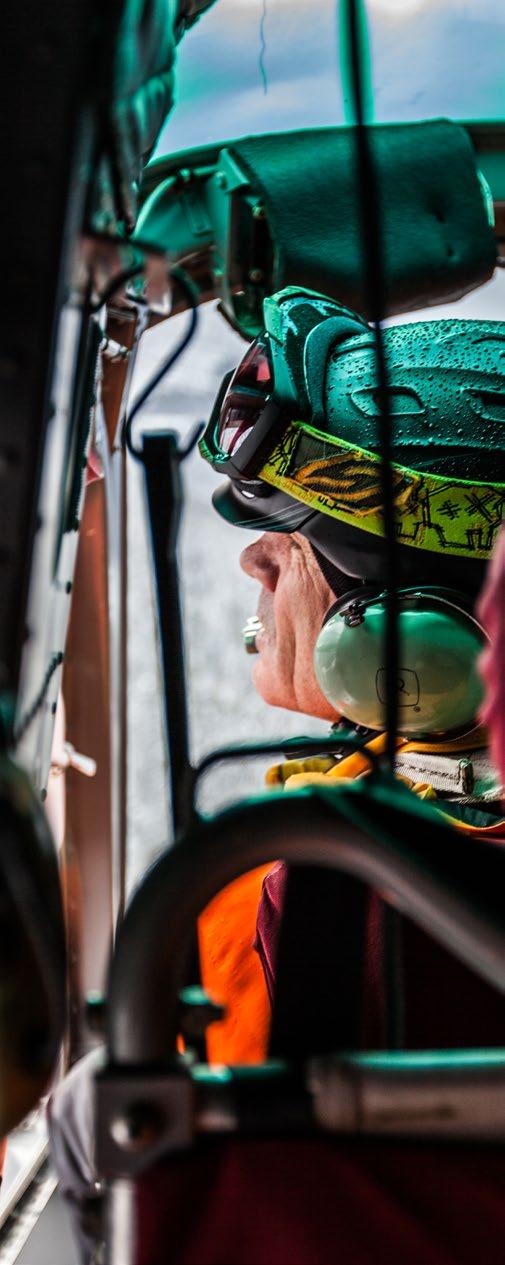
We are fierce stewards of the remote mountain locations we are privileged to operate in. We have a responsibility to care for these special places. It’s not one we take lightly.
We partner in meaningful ways with the Indigenous and non-Indigenous communities in which we operate.
We make decisions with the belief that the financial, environmental, and social components of our business are equally important. That our stewardship of the environment, commitment to people, and the profitability of our business will ensure a sustainable future for our company and the economic and social well-being of the communities in which we live, work and play.
Hans Gmoser, who founded CMH Heli-Skiing & Summer Adventures in 1965, was a committed environmentalist and community leader long before the green revolution or rise of the climate crisis. He instilled a sense of stewardship and a way of thinking that continues throughout the company today.

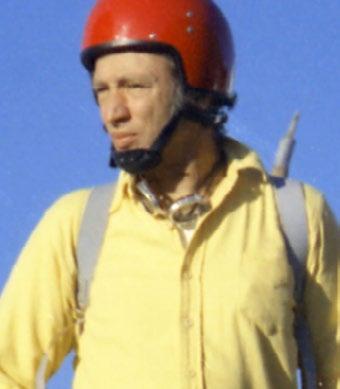
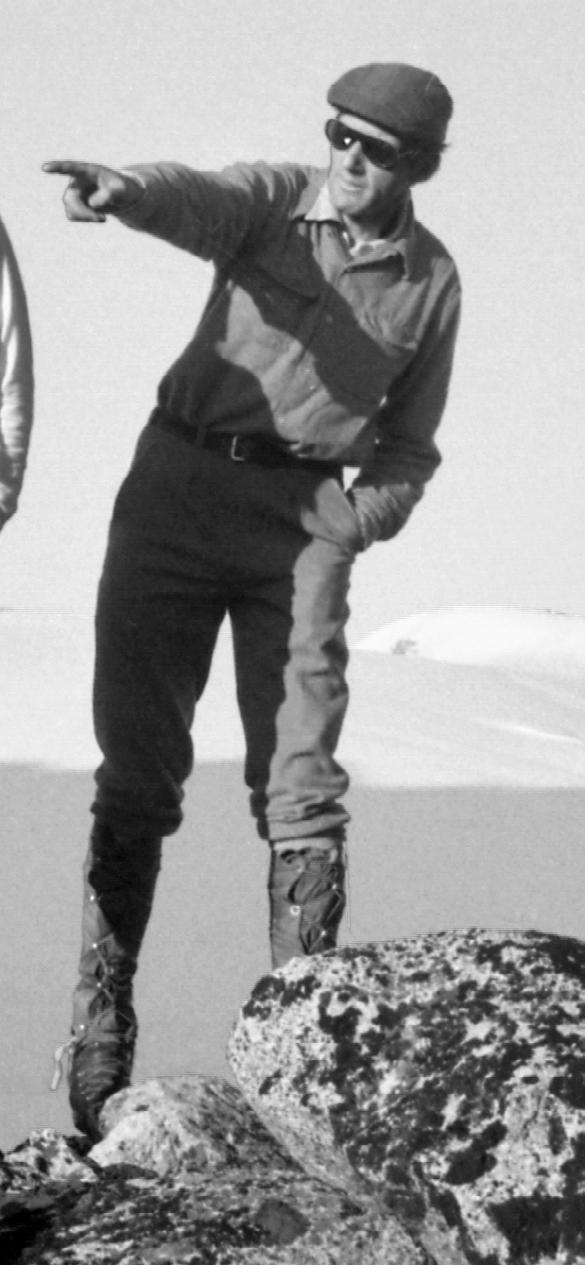
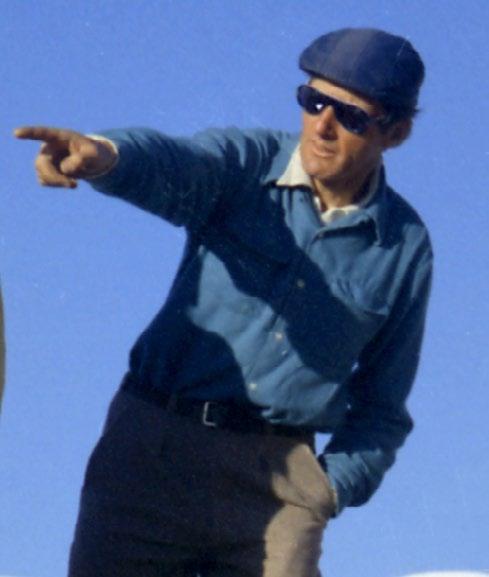
A
A BIG
IF YOU HAPPEN TO BE THE FLOWER THAT GETS STEPPED ON.
Hans Gmoser, guide & CMH founder
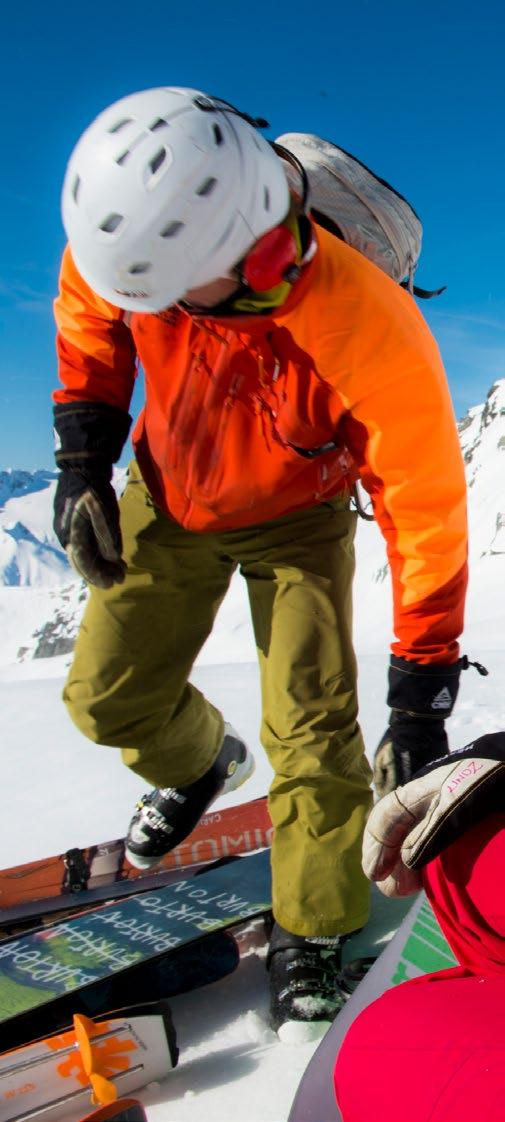
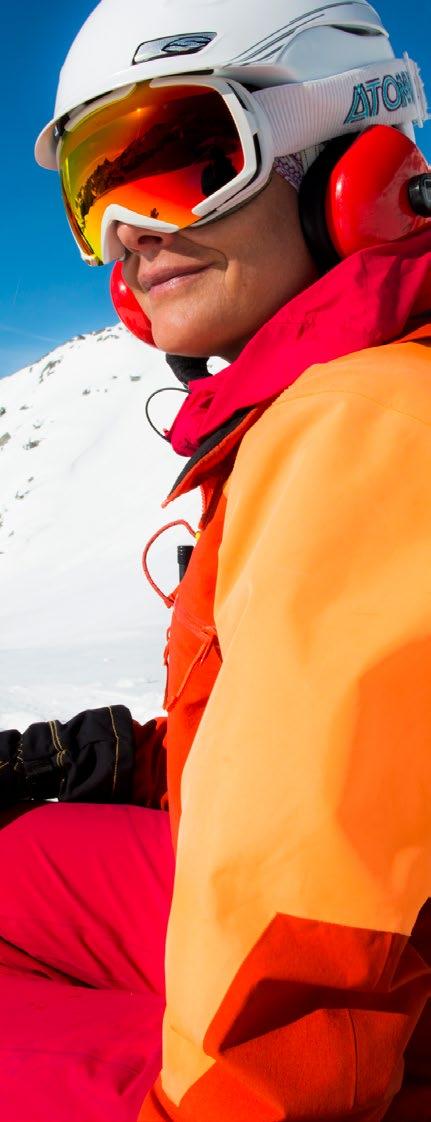
A lot, in fact. We just haven’t talked about it for a while — or in some instances, at all. Our most recent big change?

WE AREN’T ABLE TO REDUCE OR ELIMINATE.
What follows is an honest discussion of what we’re focused on, what’s going well, and what still needs work. Our promise: we’re not going to peddle you ‘green’ or ‘eco-friendly’ heli-skiing or helihiking. We will, however, be upfront about our impact and tell you what we’re doing about it. We’ll share with you our thought process, our attempts (and sometimes failures), and show you where we’re headed.
It has been too long since we last shared a sustainability report. Our last published report was in 2010. Because it has been a while, we’d like to take the opportunity in the pages ahead to re-introduce you to the work we’ve been doing, and to walk you through the bigger picture of our present-day approach to sustainability. If you’ve known us since the days of our former Second Nature program, or even before that, you’ll know that we’ve been committed to this way of thinking for many years. If this is your first time learning about our work, welcome.
GO AHEAD AND FLIP THE PAGE.
WHAT YOU LEARN MIGHT SURPRISE YOU.
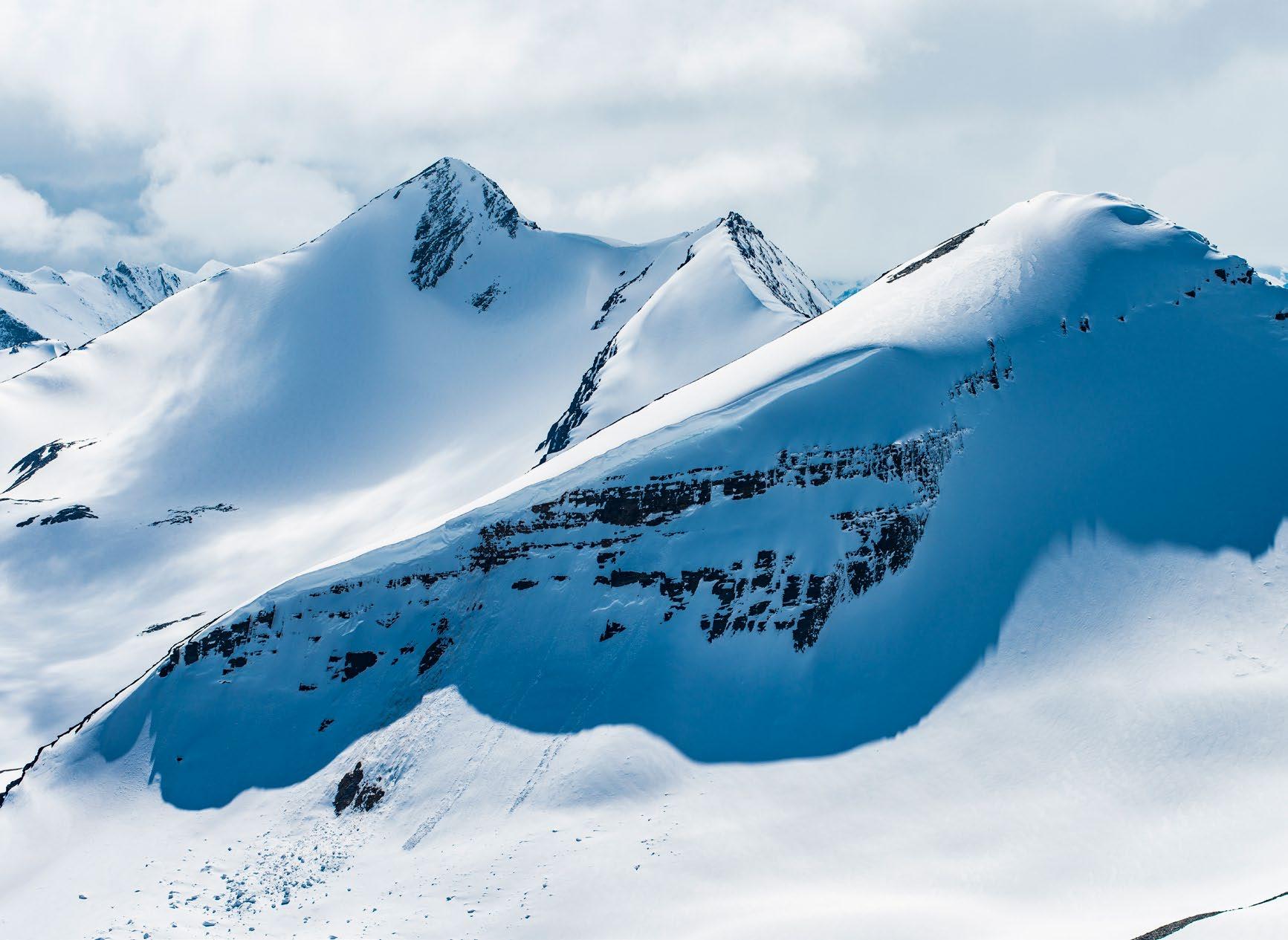
We guide people through life-changing mountain experiences
CMH was the first-ever commercial heli-skiing operation. We’ve been guiding our guests for more than 55 years
We are honoured to operate in the traditional territories of the Ktunaxa, Secwépemc, Syilx, Sinixt, Carrier and Stoney Nakoda Nations
We have 12 destinations across British Columbia, Canada
We offer heli-skiing at all 12 destinations (Dec–May)
And heli-hiking at 3 destinations (July-Sept)
We are the largest employer of professionally certified Mountain and Ski Guides in the world
We employ 750 people at the peak of our winter season
Our head office is in Banff, Alberta
CMH is owned by Alterra Mountain Company.
To focus our sustainability work, we’ve zeroed in on three main areas we’re putting our efforts towards:
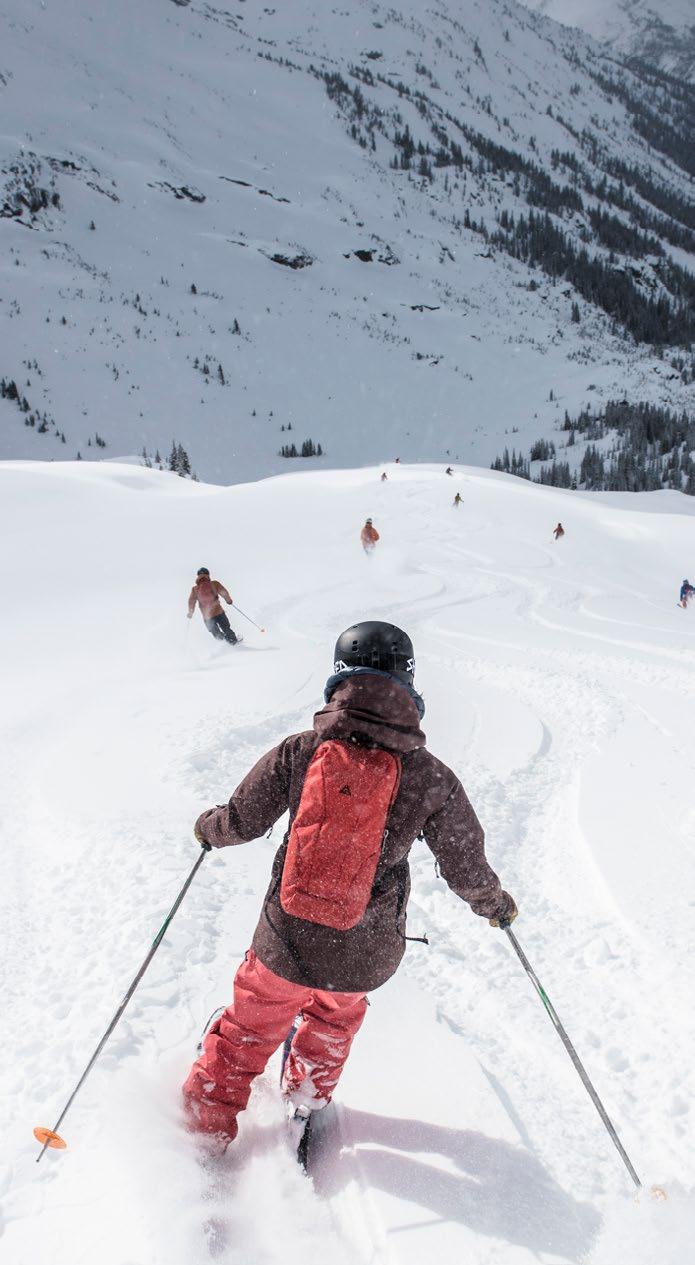
What we’re doing to track, reduce and offset our carbon footprint.
How we make operational choices that protect and give space to wildlife in the areas where we fly, ski and hike.
How we partner with and support the Indigenous and non-Indigenous communities in which we live, work and play.
What we’re doing to track, reduce and offset our carbon footprint.
MEASURE REDUCE OFFSET
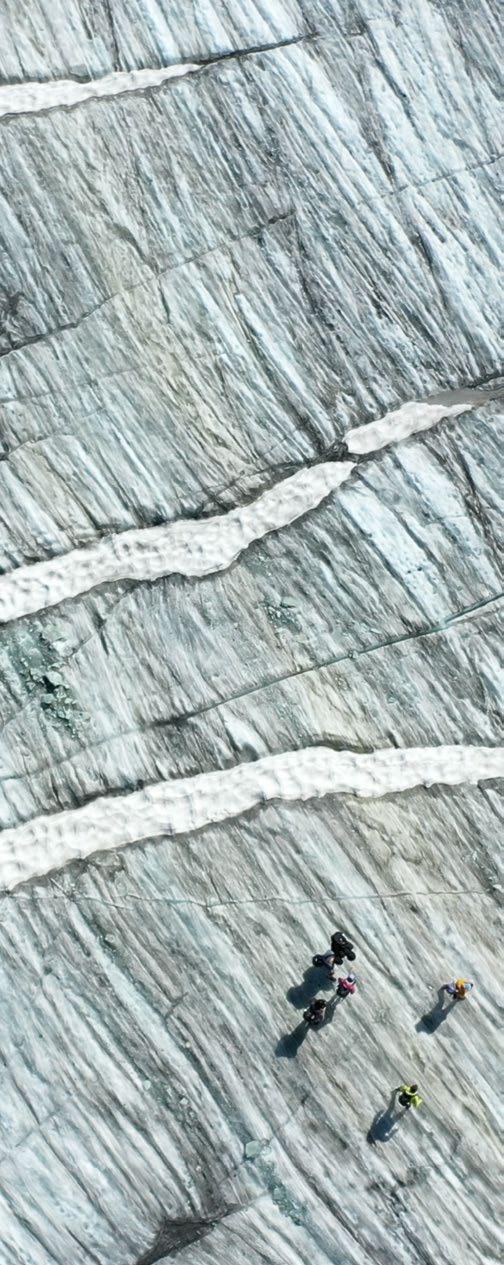
The tourism industry is responsible for 8% of global emissions1 . Transportation-related emissions are the second largest contributor of total emissions in Canada2.
In our line of work, we contribute to both.
We also spend every day in the mountains and are firsthand witnesses to the impact climate change is having on the physical environment — the very environment we have a deep connection to. The very environment CMH’s existence is built on.
We recognize this seeming contradiction.
These are just some of the reasons we are pushing ourselves to reduce our carbon footprint.
MEASURE REDUCE OFFSET

In 2021, we partnered with Radicle to measure our greenhouse gas emissions and establish a new baseline carbon footprint for our business. We say ‘new’ because this is actually the fifth carbon accounting exercise we’ve done since 2007. We’ve used past iterations to work on reducing our footprint with straightforward changes, but we wanted to take things a step further and begin offsetting. To do this, we needed a fresh understanding of our current emissions.
For one full year (August 1, 2021 - July 31, 2022) we measured and tracked our activities via Radicle’s Climate Smart program. Our measurements were then translated to a Carbon Dioxide Equivalent (CO₂e) to give us our Baseline Greenhouse Gas Emissions Inventory.
We selected Radicle to work with because it adheres to carbon accounting best practices, including the Greenhouse Gas Protocol — the international standard for carbon accounting. As the largest developer and supplier of compliance-grade offsets in Canada, we saw Radicle as the neutral third-party we needed to ensure our reporting was accurate, and to connect us with a quality registered offsetting project close to home.
› Learn more about carbon footprinting terminology
2021-22 was a time of near-normal operations for us, although there were some exceptions due to the COVID-19 pandemic.
The resulting data reflects a year where all our lodges were open and operating with guests during the heliskiing season, but during the helihiking season, only one of our three summer lodges operated with guests. In addition, we reduced the number of guests in our lodges at some points during the year to increase health and safety by creating more physical space. So, we can predict that our emissions as measured in 2021-22 likely would have been higher had it been a normal, non-COVID year.
CONDUCTED BY RADICLE
10,371.74 METRIC TONNES CO2e
We are now working with Radicle on a targeted emissions reduction plan so the actions we take have the greatest possible impact. This is the final step in our pursuit to receive official Carbon Neutral Certification as part of Radicle’s Climate Smart certification program.
Transporting people: Air
Our use of helicopters, special air transport and all staff air travel.
Heat generated
The energy used to create heat in the lodges.
Electricity generated
The energy used by the diesel generators that provide power for most of our remote lodges.
Transporting people: Staff commuting
An estimate of our staff's movements to and from work at our lodges and head office.
Transporting people: Roads
Our movement of guests on buses, CMH fleet vehicles assigned to employees, plus our movement of goods to/from lodges.
Other garbage
An estimate of waste generated by our operations, including our lodges and offices.
Electricity purchased
The electricity we purchase from grid-based utilities to power our Banff office facilities and our non-remote lodges that have access to the grid.
Light equipment
The energy used by lodge equipment such as snowmobiles, ATVs, chainsaws and snow-blowers.
Scope 3 other
Other indirect emissions.
Our primary focus was reporting our direct GHG emissions (Scope 1), but we also measured as much of our indirect emissions (Scope 2 and Scope 3) as we had data for. Scope 2 and 3 emissions will be a growing focus for us moving forward. Scope 3 is perhaps the trickiest data set to collect because we have little or no control over it, but it is key to understanding just how far the reach of our business goes.
Direct emissions from energy use across CMH facilities and CMH-owned equipment or vehicles.
Indirect emissions from purchased energy use (electricity, heating, and cooling) provided by an energy company.
Indirect emissions that are generated by activities occurring in our supply chain. These emissions are from sources not owned or controlled by CMH, such as our retail gear/ equipment partners, or the third-party hotels we partner with.
MEASURE REDUCE OFFSET
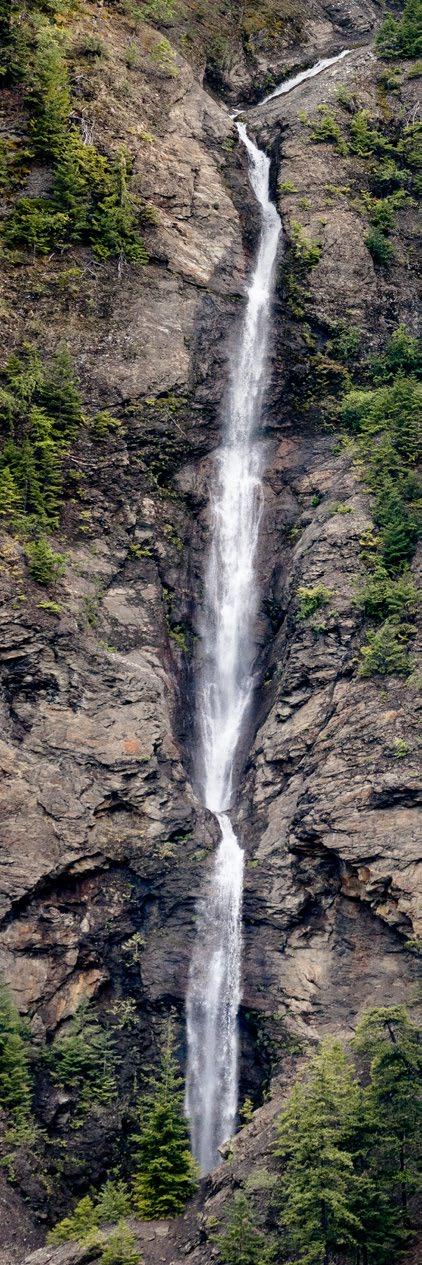
FLY THOUGHTFULLY
REDUCE FUEL RELIANCE AT OUR LODGES
INSTALL MORE MICRO-HYDRO SYSTEMS
APPLY LODGE ENERGY AUDIT RECOMMENDATIONS
UPGRADE FUEL STORAGE AND DISTRIBUTION SYSTEMS
TRACK AND REDUCE FOOD WASTE
WORK WITH SUPPLIERS TO REDUCE PACKAGING
Air transportation is the source of more than half of CMH’s total carbon footprint. Helicopter transportation accounts for much of this.
When it comes to our ability to significantly reduce flight-related emissions, our industry is limited by current aviation technology. Electric or solar-powered helicopters aren’t in the works anytime soon, and for such technology to advance, we are reliant on helicopter manufacturers to innovate. We can apply pressure and provide partnership to encourage new technologies — and we are — but at the end of the day, we don’t build helicopters. So, right now we are tied to the use of aviation fuel and its resulting emissions.
To eliminate heli-related emissions altogether, we’d have to stop operating. That's not a realistic choice for the future of our business, the people we employ, or the infrastructure we already have in place. So, we’re approaching things from the position that heli-skiing exists and will continue to exist, and we’re laser-focused on asking ourselves how we can do better across the board. Where are the areas of our business where we can directly affect change? Where do we have the power to move the dial on reducing our overall emissions?
This bigger-picture outlook doesn’t mean we aren’t continuing to be thoughtful about how, when and where we fly, though. Flying strategically is beneficial for us in more ways than one: first, it helps us control our single biggest expense, which is flight time and fuel costs. Making tactical choices about how we fly saves us money. However, it also importantly helps us reduce our air transportation emissions. It’s a good choice for both reasons.

Our pilots and guides are trained to plan group pick-ups and transfers in a way that creates helicopter movement that’s as efficient as possible. This is built into our official operating procedures. For example, guides coordinate where and when groups will be picked up and dropped off in a way that allows the helicopter to fly in a pattern with the shortest flight path. Over an entire season, this adds up. We’ve attempted to track just how much of a difference this makes, but it’s challenging for several reasons.
First, the amount and distance we fly is heavily influenced by weather. During a precipitation-heavy season, we stay close to the lodge more often, so we fly less overall than in a season with frequent bluebird skies when we travel further afield in our tenures. Weather fluctuates day-today, week-to-week and year-to-year, so our flying stats mirror the same inconsistent trends. This is closely tied to safety considerations such as snow stability, which affects which runs we can access.
We must also navigate scenarios that arise because of unmanaged recreation in the backcountry; we change our flight paths to avoid snowmobilers, people randomcamping, and others. Lastly, our flight choices are constantly shaped by the presence of wildlife; we adjust our flying to give wildlife space (see page 46 for more). And although we already do that, we are increasingly challenged by the government to widen separation with wildlife, which usually results in flying an indirect route. Collectively, these complex factors make it difficult to draw any conclusive data comparisons about our flight activity over time. However, we know that the regular practice of coordinating flight movements prevents additional emissions that would otherwise occur.
On exchange days at our remote heli-accessed lodges (an exchange day is when outgoing guests swap places with incoming guests) we carefully choreograph the movement of people, luggage and lodge supplies so the heli never flies empty. This elaborate game of leapfrog means a helicopter of outgoing guests is immediately loaded up with fresh food and inbound luggage before it returns to the lodge to pick up the next group. Having a full heli travelling in both directions means we don’t need to make extra, unnecessary flights.
Continued research and innovation in aerospace hold the greatest potential for emissions reductions in our industry. We're following ongoing advances in Sustainable Aviation Fuel (SAF) and working with our partner, Alpine Helicopters, to assess if SAF is a viable future option for our business. We’re not there yet, but there is no question that we, and many others, are hoping that the relative lack of SAF refineries and the supply of SAF in North America will catch up with the demand.
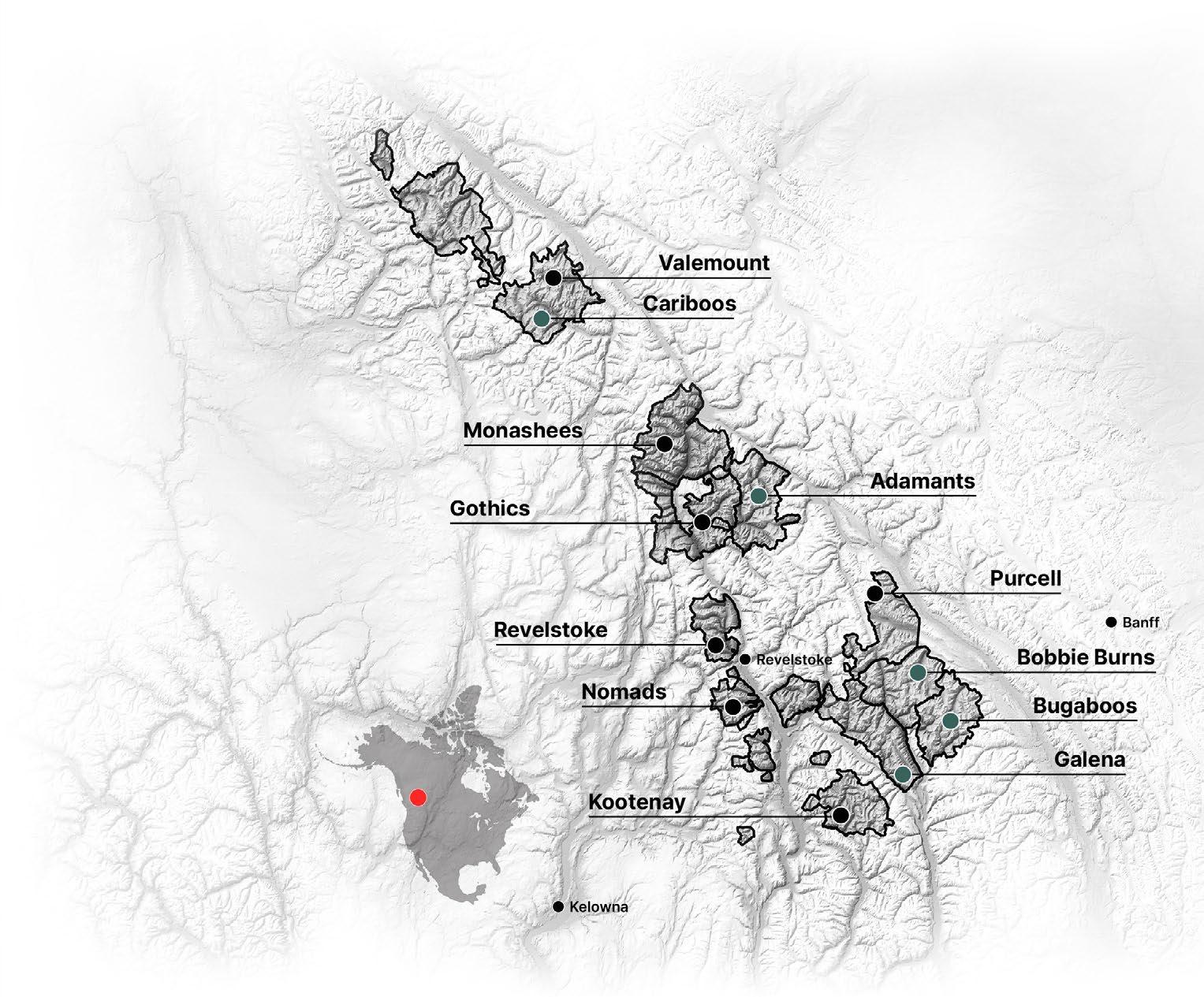
*Approximate locations shown.
The second largest source of our greenhouse gas emissions is the energy we use to power and heat our lodges. This is the area of our business where we know we can make the biggest reductions and have the most significant impact. It’s where we’re putting most of our efforts.
Our strategy to reduce lodge-related emissions can’t be onesize-fits-all — in reality, it’s more like planning 12 different approaches. That’s because we have 12 destinations, each with buildings that are entirely unique. Each lodge’s location dictates its available energy options, and the changes we may make at one location won’t necessarily work the same way at another.
With a goal of reducing our overall reliance on lodge-related fuels, we’ve challenged the talented teams at each CMH destination to reduce their annual use of diesel, propane and gasoline (differs by lodge) by 10% by August 2023. To achieve this, each destination is developing a plan suited to the intricacies of its location and infrastructure.
Five of our lodges are remote, off-grid, and most are accessible only by helicopter for more than half of the year. Most of these remote locations rely on dieselpowered generators and propane to meet their energy needs because they are situated nowhere near the energy grid.
Our seven other locations are accessible by road, but range from in-town hotels to private, luxury lodges. These non-remote facilities have access to the energy grid, so they don’t use diesel as their primary energy source; instead, they use purchased heat and electricity.
To add another layer, each lodge also differs in size, age, renovation history, guest and staff capacity, layout, building materials, equipment and infrastructure. Whew. They are a complicated but fantastic fleet.
10% REDUCTION BY AUG 2023
Our single largest opportunity to dramatically cut down — or even completely eliminate — the fuel we rely on to power our remote destinations lies in installing more micro-hydro systems. If we were able to install these water-fed, renewable energy systems at each of our remote lodges, it would result in a 1020% reduction of each lodge’s overall carbon footprint.
We've been superfans of micro-hydro since the early 2000s. We installed our first system at CMH Galena in 2005. These smallscale hydroelectric projects use the energy in falling water to generate electricity. If done well, this is a form of renewable energy that has little to no environmental or cultural impact, does not result in the creation of large dams and/or flooding, and yet will reduce the consumption of fossil fuels. We told you, superfans!
Galena’s micro-hydro system has resulted in the lodge using 50,000 litres (13,209 gallons) less diesel, and 30,000 litres (7,925 gallons) less propane each year, compared to prehydro-system years. Although Galena still relies on some generator use at certain times of the year, its micro-hydro system has removed most of its in-lodge fuel consumption.
Seeing the drastic positive impact at Galena, we had big plans way back in ‘05 to follow closely behind with matching systems at our other remote lodges, but changes in our business at the time forced us to hit the pause button on growing our microhydro technology. We’ve been stuck in micro-hydro limbo since then, but we’re excited to say we're finally rebooting this initiative thanks to renewed support from our now-parent company, Alterra Mountain Company.
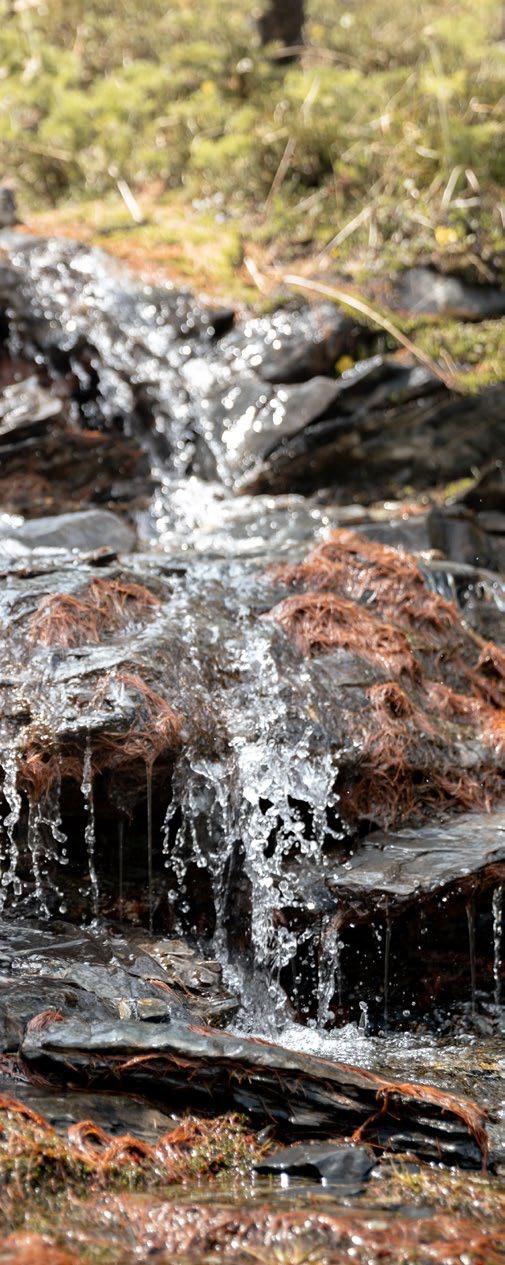
In 2022, we spent the summer conducting site assessments at CMH Adamants, which will be the next in the CMH lodge lineup to receive micro-hydro technology. We worked with the Shuswap Band and a team of environmental specialists to study the waters of Norman Wood Creek, which we hope will be the source of water for the Adamants' micro-hydro system. And we asked the Shuswap Band’s archaeologists to examine the possible cultural impacts of installing it, plus advice on how to mitigate any impacts. Depending on the results of all these studies, we are hopeful that the system can be installed as early as 2024. We project that this system will reduce diesel use at the Adamants by 100% and propane use by 60%.
Beginning in 2023, CMH Bobbie Burns and CMH Bugaboos will be next to go through the feasibility study process for their own microhydro facilities.
We’re using data to prioritize our in-lodge energy saving initiatives. In 2022, we partnered with energy auditor McKinstry, which conducted an extensive audit of five of our lodges to identify efficiency opportunities and to help us set goals and targets for energy and emissions reductions. These five lodges represent a cross-section of all CMH destinations. The audit took a deep dive into everything from generators, boilers, heat pumps, heat recovery units, pipes, lightbulbs, and a whole lot more — right down to our kitchen range hoods.
We’re using the results of this audit to plan which improvements to invest in next, and to understand what the resulting impact would be. This includes both large-scale initiatives like micro-hydro systems (see page 28) and smaller-scale initiatives, like the lightbulbs we choose.
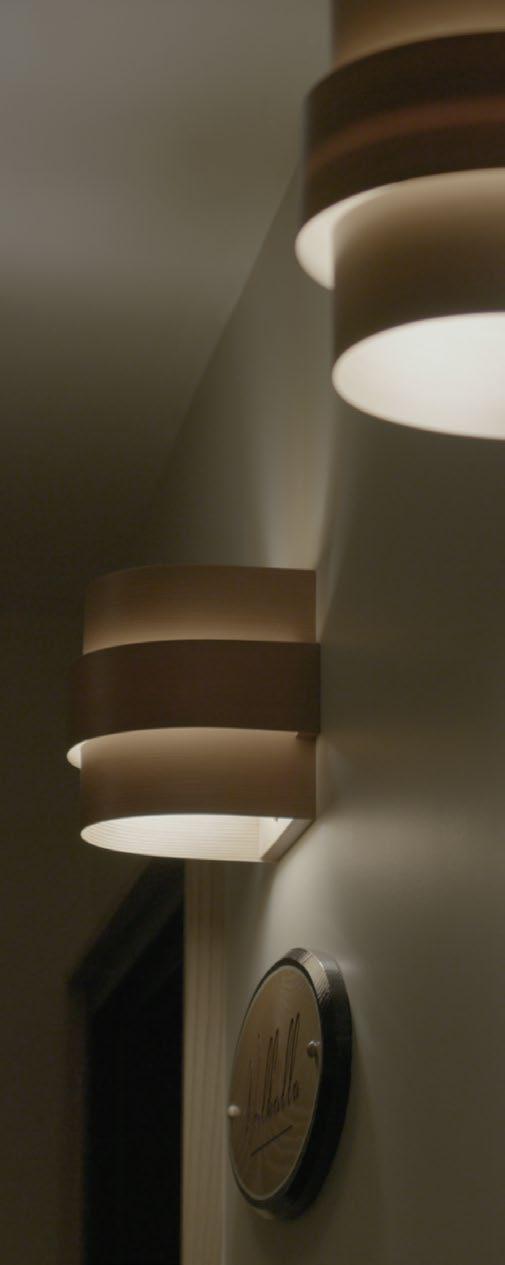
For example, we’ve already spent years retrofitting most of the lightbulbs in our lodges to LED bulbs. Although we’ve replaced thousands of bulbs, some lingering non-LED lights remain in select locations like supply closets and kitchens. From our recent energy audit, we were able to identify that if we invest around $20,000 to fully complete our LED conversions across all our lodges, we can save:
ELECTRIC USE SAVINGS
17,100KWH/YEAR FUEL OIL USE SAVINGS
1,315 L
4.8METRIC TONNE/YEAR
We’ll be implementing the audit’s recommendations over the next few years and beyond. Other improvements include fine-tuning how and when we use our generators, moving to programmable thermostats wherever possible, and fully insulating all hot water piping to reduce heat loss. It’s all in the details.
We've learned that sometimes, the improvements we make to our buildings have unintended consequences in other areas of the lodges’ energy systems. When we swapped most of our lightbulbs with LED bulbs, for example, the electricity consumption in our lodges decreased as hoped. However, in reducing the load on our generators, we also saw instances where generators were running below their most efficient range, which means added fuel burn. Plus, the removal of the heat the old bulbs collectively generated resulted in needing to incrementally up our heat use to keep lodge temperatures comfortable. So, as we look at putting recommendations from our recent energy audit into action — such as adding more LEDs — we’re thinking carefully about how we can fine-tune our use of the lodges’ energy systems in concert with these improvements so we can add new technology without taking one step forward and one step back.
We know we're not able to eliminate our use of fossil fuels, so we’ve invested heavily in upgrading the on-site systems that store and distribute the fuel we use to power our lodges and operate our aircraft. We started these upgrades a few years ago, beginning with some of our first lodges, like CMH Cariboos and CMH Bugaboos. Their storage infrastructure was aging out and in need of modernization.

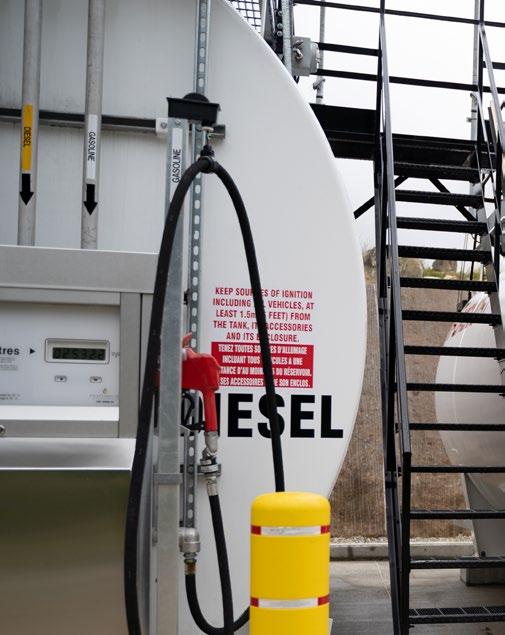
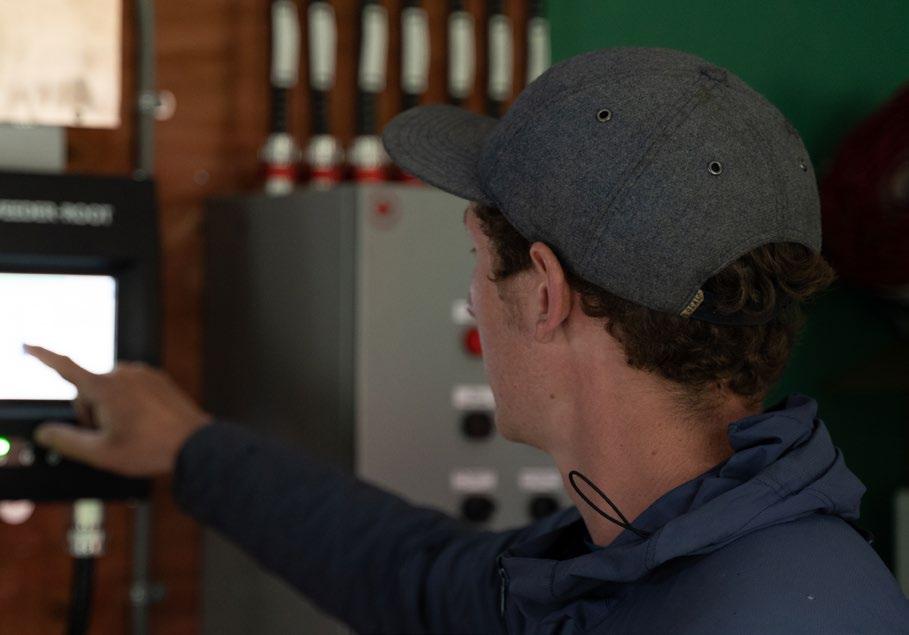
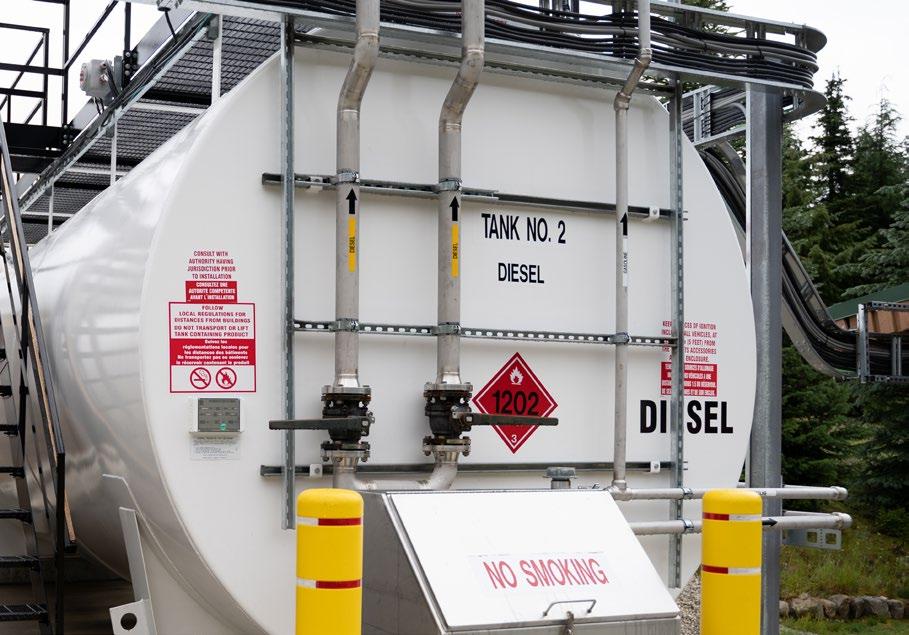
At the Bugaboo Lodge alone, we spent nearly $4 million in 2022 working with industry experts at W.S. Nicholls Western Construction to upgrade the storage and distribution components of the lodge’s aviation fuel system. The updates ensure the site meets or beats all current regulatory, environmental, and occupational health and safety requirements. This follows on the heels of a major upgrade to the diesel storage and distribution system at the same lodge.
We’re now able to digitally and remotely monitor our fuel use and make adjustments to a much finer degree than ever before. These upgrades also nearly eliminate the risk of ground contamination or a fuel spill incident.
CMH is known for its incredible culinary program (there’s a reason for the term ‘heli-belly.’) But we’ve come to realize that in the process of delivering mouth-watering experiences at the dinner table, we could likely produce less food waste. Right now, we don’t consistently calculate the amount we produce because we don’t have a standard tracking process in place. We track food waste at a few of our lodges that have on-site composters, but it isn’t something we calculate at most lodges.
At CMH Cariboos, which measures wet food waste en-route to its compost system, we estimate that we produce somewhere in the neighbourhood of 28-35, 20-litre (5-gallon) buckets per week. That translates to roughly 454-640 kg (1,000-1,400 lbs) per week, or 9,997 kg (22,000 lbs) per winter season. That’s a little less than 1.3 kg (3 lbs) per person, per day. This calculation captures uneaten food, coffee grounds, bones, peelings, soiled paper napkins, coffee filters, tea bags, eggshells and any other compostable material.
We’re not terribly comfortable with that napkin math.
With no official processes in place at present, we’re not yet clear on the resources we need to be able to implement proper tracking around the excess that comes out of our kitchens, or what percentage of our overall food purchased results in waste. In Canada’s food service industry (including hotels, restaurants and institutions), the average amount of food purchased that becomes waste is 21% of dairy, eggs and field crops, 38% of produce, and 20% of meat1. How do we compare? Can we do better than this industry standard? How, exactly? These are the questions we’re beginning to pose to our teams who conceptualize, order and prepare the tasty creations our guests enjoy.
› 1. (Government of Canada, VCMI, 2019)

Trying to find a solution to handling our food waste has been a quandary at CMH for at least 30 years. Even without official measurement in place, we’ve tried it all: landfill, incinerator, composting...heck, we even had pigs at one point! Two of our lodges currently have large-scale compost systems, but these have their own host of headaches that make trying to compost not terribly effective, and certainly not easy for our lodge teams. Most of our lodges are remote, at high elevations, and the largest volume of food waste occurs during the cold winter months — combined, these conditions make composting a slog. And the resulting product is a bit of a head-scratcher to handle. We struggle to integrate it into the lodges’ landscaping needs, but alternatively, trucking it great distances to the nearest community for home garden use involves creating a whole new set of fuel use and emissions. It's a code we haven’t yet cracked.

We’ve been trialing a biodigester system at CMH Kootenay as a potential technology to replace our composters. Biodigesters are closed systems that create compost from food waste at a remarkably high rate compared to traditional composters. The machine we tested can hold 227 kg (500 lbs) of wet waste and it produces half a large garbage can of compost every 24 hours. Our trial run made us conclude that it would be a good option to install at more of our lodges.
The trial run also revealed that we need help answering some biggerpicture questions. So, now we're embarking in 2022/23 on a partnership with researchers at the College of the Rockies to help us analyze the unique conditions of our lodges, and how we could handle our excess differently. We’ll use the results to guide the future of food waste at CMH.
WE TRANSPORT
495,096KG (1,091,500 LBS) OF GOODS TO OUR LODGES EACH YEAR
95% OF THIS AMOUNT IS GENTLY MANEUVERED THROUGH AN 869 SQ. FT. WAREHOUSE IN BANFF, AB. AND DELIVERED TO THE LODGES BY 3 TRUCKS
This carefully orchestrated movement of goods includes everything you see in our lodges: food, alcohol, linens, skis, plates...everything down to the literal nuts and bolts needed by our maintenance teams.
Most of these transported goods originate from suppliers we work with. This gives us an opportunity to work with our partners to affect the amount of packaging used for the goods that travel to our lodges — because what goes to each lodge by truck or heli, must also come out by truck or heli. Even though our lodges recycle glass, cardboard, tin, refundable containers, hard plastic, paper and soft plastics, we want to do everything we can to reduce the amount of material they receive so there is less they must later transport out to be recycled or disposed of at landfill.
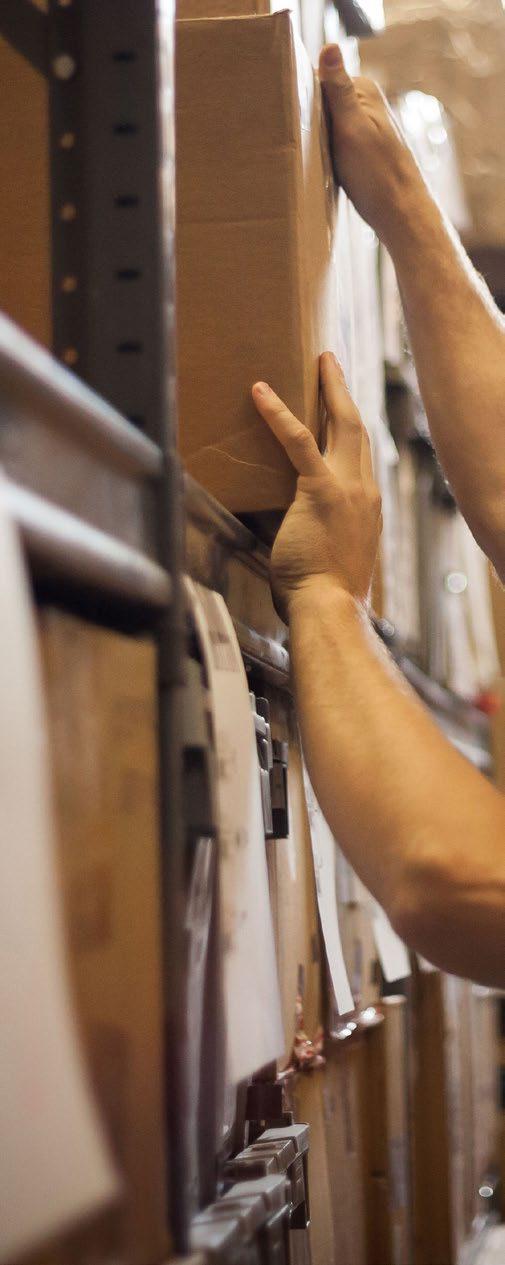
Here’s what it looks like when we work with our suppliers to make incremental changes that add up:
495,096KG (1,091,500 LBS) /YEAR
The amount of plastic wrap has been saved annually by asking our large suppliers to stop wrapping the skids of goods we receive with plastic shrink wrap. We worked with them to purchase a reusable wrap instead, which we can now reuse year-round.
2,500BOXES/YEAR
The number of Styrofoam boxes we diverted from the landfill by working with our fish supplier to change the way our fish is shipped to us. Our deliveries are now sent in recyclable cardboard boxes lined with plastic. The plastic linings must still go to the landfill for food safety reasons, but this change results in less waste overall.
We’re making strides reducing our emissions, but at the end of the day, we create emissions we can’t eliminate. That’s where offsetting comes in.
MEASURE REDUCE OFFSET


As a result of our recent Baseline Greenhouse Gas Emissions Inventory, we are offsetting 100% of our total emissions for the 2021-22 year. Our emissions were 10,371.74 metric tonnes CO2e.
We are offsetting through the purchase of registered, voluntary carbon credits. In 2022, we purchased $204,000 in credits in support of a verified, third-party project via our offsetting partner, Radicle.
With this purchase and through our project of choice, we are supporting a reduction or removal of the equivalent volume of our 2021-22 emissions — 10,371.74 metric tonnes CO2e — from the atmosphere (1 carbon credit represents a reduction of one tonne of CO2 or its equivalents). For comparison, the volume we’ve offset is equivalent to the greenhouse gas emissions of 2,235 gasoline-powered passenger vehicles driven for one year.
We’ve chosen to support the Great Bear Initiative and Haida Gwaii on the coast of British Columbia, Canada, with our first offset purchase. It was important to us to select a project as local as possible to our 12 destinations, which are all in British Columbia.
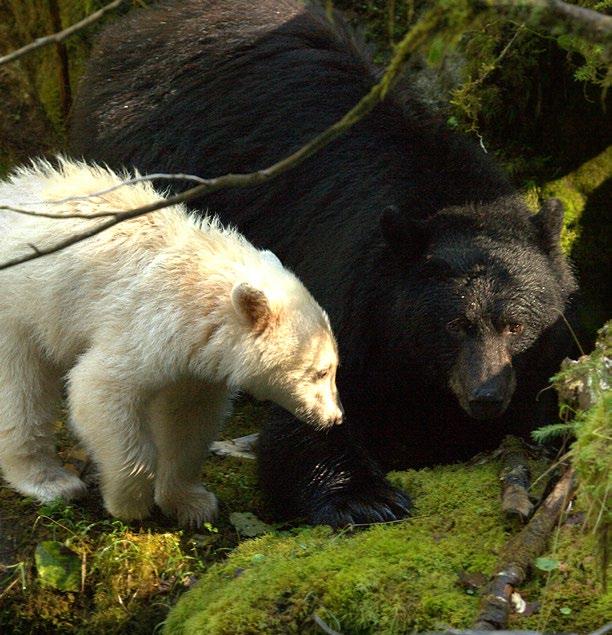


The Great Bear Rainforest is the largest remaining intact coastal temperate rainforest in the world
Through the sale of offsets, Coastal First Nations supports and creates local employment, stewardship programs such as the Marine Plan Partnership for the North Pacific Coast and Guardian Watchmen, and management of conservation and biodiversity areas as stewards to the land
This project protects forests that were previously available for logging. This reduces emissions caused by harvesting, road building, and other forestry operations
The project generates up to 1 million metric tonnes CO2e in credits per year
This project is the first in North America on First Nations territory with unextinguished land rights and title.
› Learn more about this project
Guests, help us multiply our impact!
Part of offsetting our total emissions includes offsetting the footprint of every single CMH guest’s heli-skiing and heli-hiking trip. Guest emissions are measured from the moment they are in our care to the moment they aren’t.
Even though we are offsetting our guests’ trip during their time at CMH, we are encouraging all our heli-skiers and heli-hikers to consider making an additional offset purchase so our collective impact can be even larger. If you are a CMH guest, we ask you to learn the carbon footprint of your flight to CMH and offset that amount via your airline’s offsetting calculator.
How we make operational choices that protect and give space to wildlife in the areas where we fly, ski and hike.

Many of the areas in which we operate are active with mountain goats, caribou, wolverines, grizzly bears, and more. Our daily goal is to do everything we can to avoid displacing or disturbing these animals — so much so that we invested heavily and built a powerful piece of software called Snowbase to help us do this important work. The winter months are when animals are the most challenged with finding food, staying warm, and avoiding predators, so that time of the year is our priority.
Snowbase isn’t new to us — we’ve been developing it for nearly 20 years — but it continues to serve as a powerful tool that shapes our activities every day.
How does it work? Our software allows us to record and track wildlife observations so we can plan our flight paths, heli-hiking and heli-skiing itineraries to avoid areas with wildlife activity. An observation is recorded when we make either a direct wildlife sighting, or note evidence of wildlife’s presence, which usually means we spot tracks. Based on these guide and pilot observations, we'll change the day’s, week’s, or even month’s plans for an entire lodge full of skiers or hikers to stay out of wildlife’s way. We’ll fly alternate (sometimes longer and more expensive) routes to avoid wildlife so they can maintain their natural patterns without interference. We collect, update and share this powerful data set daily with industry partners to help inform their own activities.
In some locations, we pair our use of Snowbase with data from government collaring programs when possible. We also assist researchers and biologists and use the results of their findings and wildlife cameras to influence our activities.
1,330
THE NUMBER OF OBSERVATIONS GUIDES AND PILOTS RECORDED IN SNOWBASE ACROSS ALL CMH AREAS.
THE NUMBER OF DAYS WE ALTERED OUR SKI PROGRAM AS RESULT OF WILDLIFE OBSERVATIONS. THIS MEANS WE EITHER CHANGED A PLANNED SKI LINE, CHANGED A FLIGHT PATH, OR CLOSED A SKI RUN OR ENTIRE AREA.
Did you know?
OVER THE PAST 20 YEARS, WE’VE CONTRIBUTED ALMOST $2.5 MILLION TOWARD RESEARCH PROJECTS AND THE WORK OF HELICAT CANADA.
In 2019 we began contributing $5/day of every guest’s CMH trip to HeliCat Canada’s Wildlife & Environmental Research Fund. One hundred per cent of this support goes to research projects that help the helicopter and cat skiing industry continually improve in areas such as wildlife, climate change, and avalanche safety.
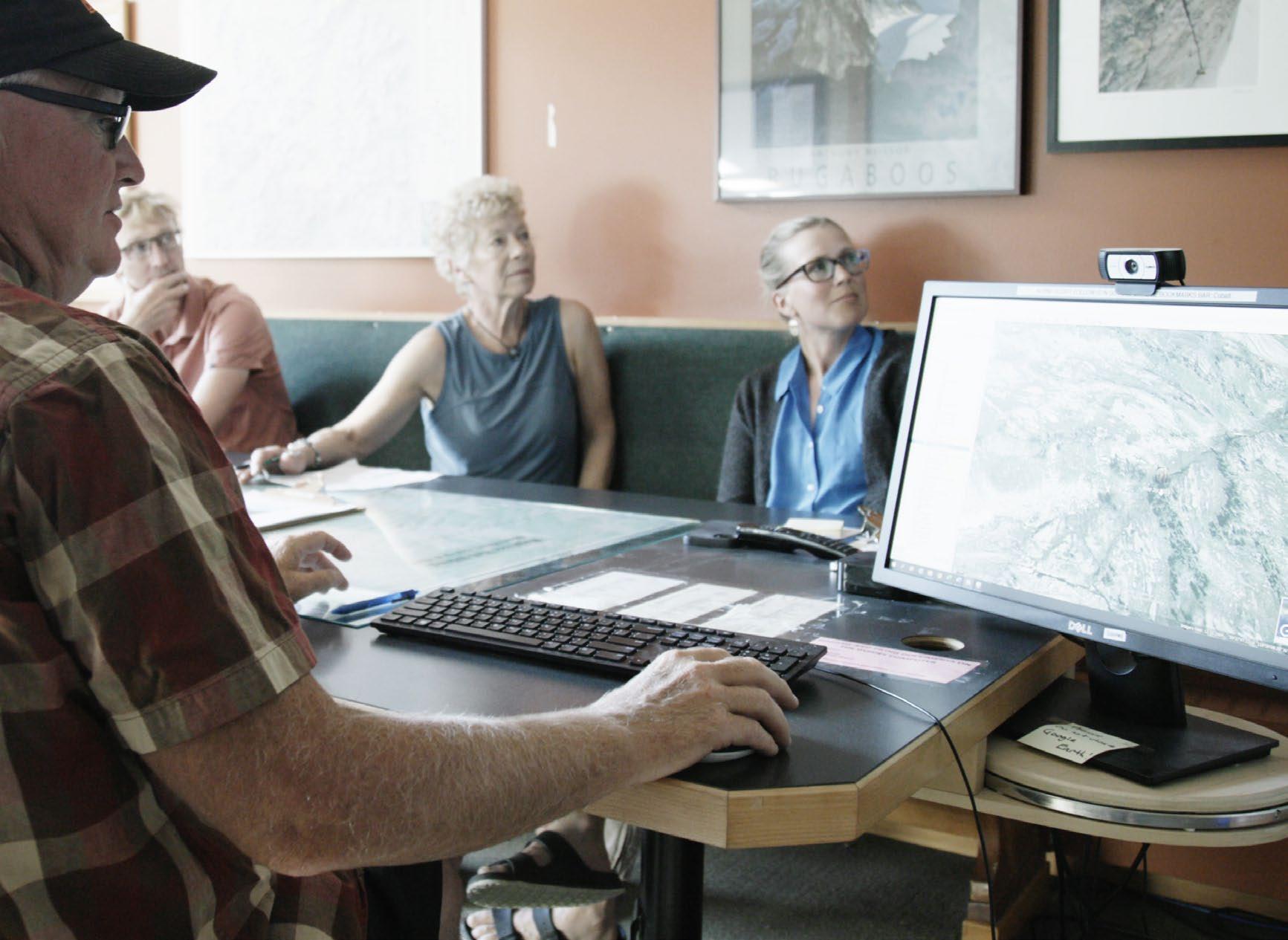
How we partner with and support the Indigenous and non-Indigenous communities in which we live, work and play.
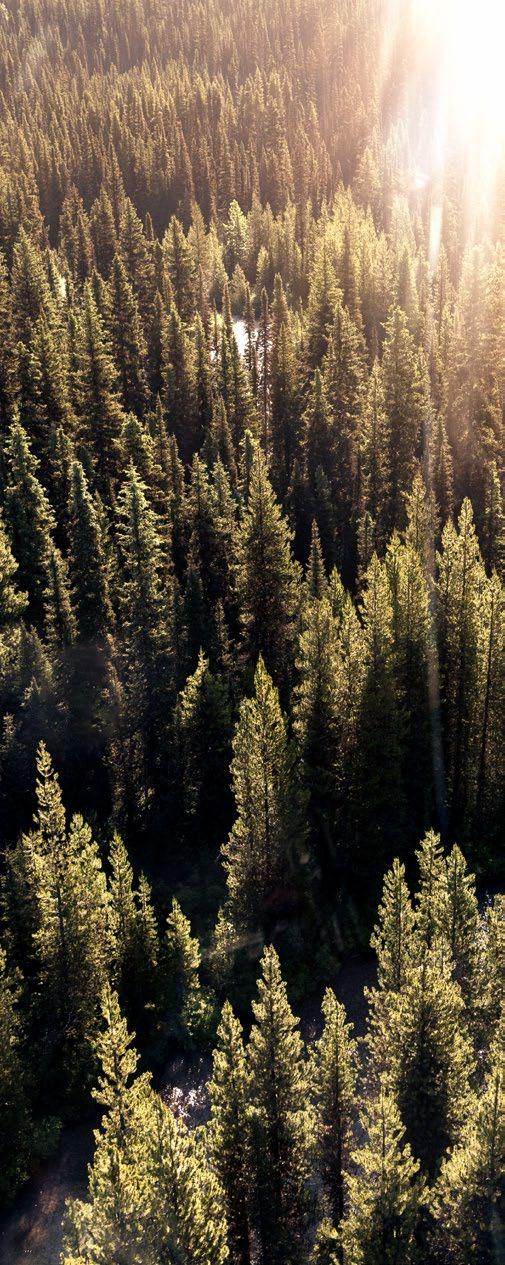
We are honoured to operate in the traditional unceded territories of the Ktunaxa, Secwépemc, Syilx, Sinixt, Carrier, and Stoney Nakoda Nations. We acknowledge the past, present and future generations who help us celebrate and steward this land. As a company and as individuals, we are committed to reconciliation and to building trusting, meaningful, and mutually beneficial partnerships that respect these Nations’ languages, cultures and histories.
Our relationships with these vibrant Indigenous communities are growing, and we are inspired to continue working together on projects that help to create capacity and new economic benefits. These include wildlife and ecological projects as well as other initiatives such as language use, youth leadership programming, cultural exchanges, and career mentoring.
Here’s some of the work we’ve been doing together:
Working with the Band’s Cultural and Heritage team, we have installed a Secwépemc cultural display at CMH Bobbie Burns (a wall outside the entrance to the lounge). This will include a training session by Shuswap staff and elders with CMH staff so we can speak about their traditional use of their territory with greater knowledge.
In September, 2022, CMH’s Director of Sustainability and Manager of Sustainability spent three days with the Chief, Council, and senior staff from the Shuswap Band at three of CMH’s lodges. The focus of the three days was furthering the relationship between CMH and the band, which includes addressing the needs of mountain caribou, economic opportunities, and career mentoring.
The planned micro-hydro project at CMH Adamants (see page 30). is being assessed and proposed in full partnership between CMH and the Shuswap Band. As part of the multiyear assessment process, we are working closely with the Band on every aspect of the project – environmental, engineering, archaeological, and electrical. We will be working hand-in-hand when seeking government approvals.
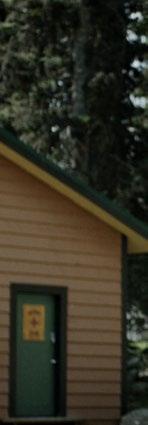
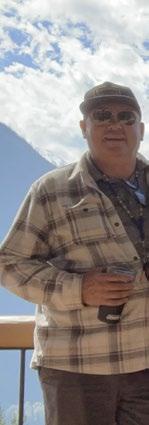
› Learn more about the Shuswap Band
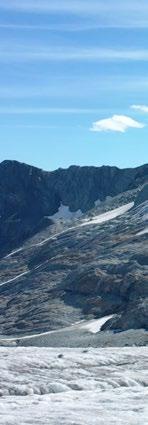
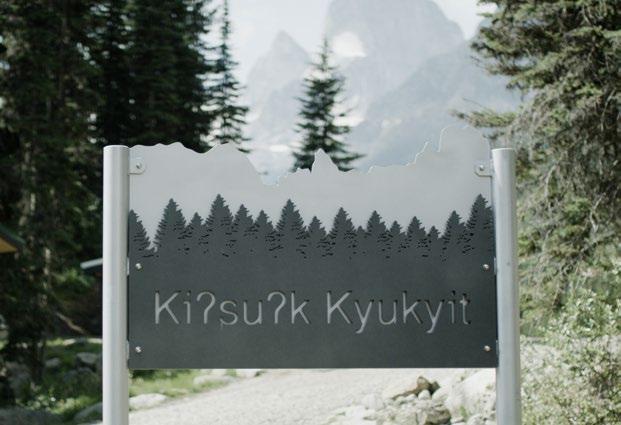

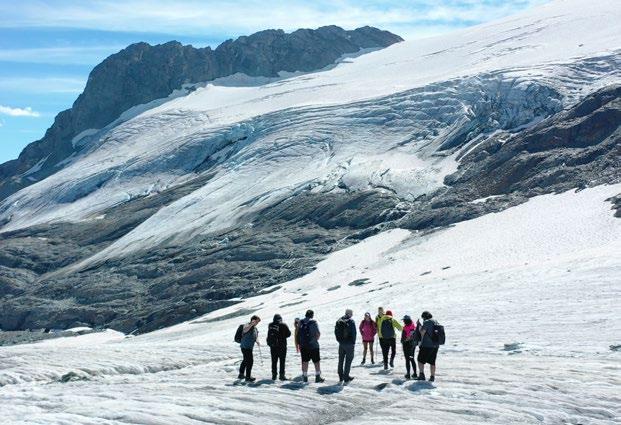
In August 2022, we welcomed 35 youth, elders, and other members of the aq'am St. Mary's Indian Band to CMH for the third time. The group spent a few days at Galena learning and connecting, surrounded by nature. Elders and leaders facilitated important teachings and conversations, participants played traditional games on the shores of Trout Lake and created handmade artwork, and everyone went on an unforgettable heli-hike together.
We sponsor a young Ktunaxa skier, Trent Walkey, in his pursuit of a career in ski aerials. Trent competes nationally in moguls and dual moguls.
We collaborated with the Ktunaxa to install a sign in the Ktunaxa language at CMH Bugaboos as a permanent land acknowledgement. Leading towards the lodge the sign greets visitors, ‘Ki?su?k Kyukyit’ (welcome) and departing the lodge it bids farewell, ‘?a·nwunikit’ (see you later).
› Learn more about the aq'am Band
Our lodges are located near many mountain communities in southeastern British Columbia and Alberta’s Bow Valley, including Revelstoke, Nakusp, Valemount, Invermere, Golden, Banff and Canmore. Many of our staff and guides call these local hubs home — it’s where we work, play, and live. We strive to support the residents and vital initiatives of these communities wherever possible.
We think working at the local level is the most effective way to offer direct support, so we look for opportunities town by town. In 2022 we established an in-house Philanthropy Committee to seek these out in a more meaningful and actionable way. We’re most focused on supporting initiatives and organizations that:
Encourage avalanche awareness and safety Are medical facilities or initiatives close to our operating areas that support emergency response capabilities or trauma recovery
Enable life-changing experiences in the mountains for youth, under-represented and/or vulnerable communities
Build meaningful and mutually beneficial relationships with our Indigenous neighbours.


Here are a few examples of how we gave to our communities in 2021-22:
Donated to Mountain Muskox, a Bow Valley, AB-based group of mountain community members coming together with professional clinicians to create a sustainable support network for those who have gone through a traumatic event in the mountains.
$10,000 197 RETIRED ARC'TERYX GUEST PACKS
Donated to a combination of 4 organizations: Girls in the Wild, Columbia Outdoor School, Salvation Army, and an after-school program in Revelstoke, BC.
25 DUVET COVERS 40 SETS OF SHEETS & 10 LARGE JUGS OF CLEANING SUPPLIES
Donated to the Calgary Drop-In Centre and Free Goods Program.
2 MULTI-DAY CAMPS HOSTED
In collaboration with Outward Bound Canada. These are retreats we host to provide a safe space for military veterans.
10 HELI-HIKING TRIPS + 4 HELI-SKIING TRIPS 6 SCHOLARSHIPS
Donated in support of the Avalanche Canada Foundation, First Descents, Inspire Health, and others.
Donated to graduating students with an interest in tourism-based careers and who are from mountain communities near our operations.
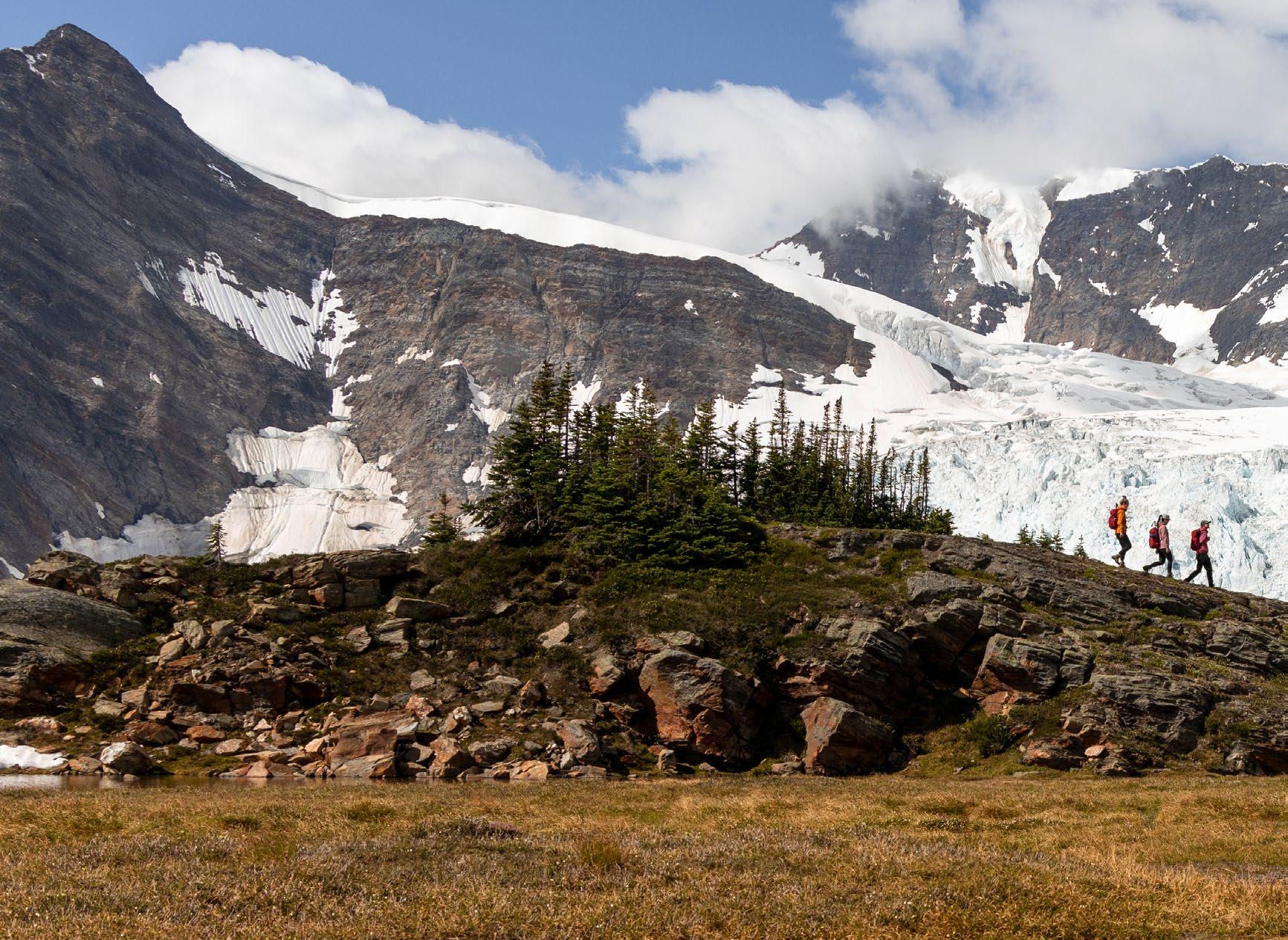

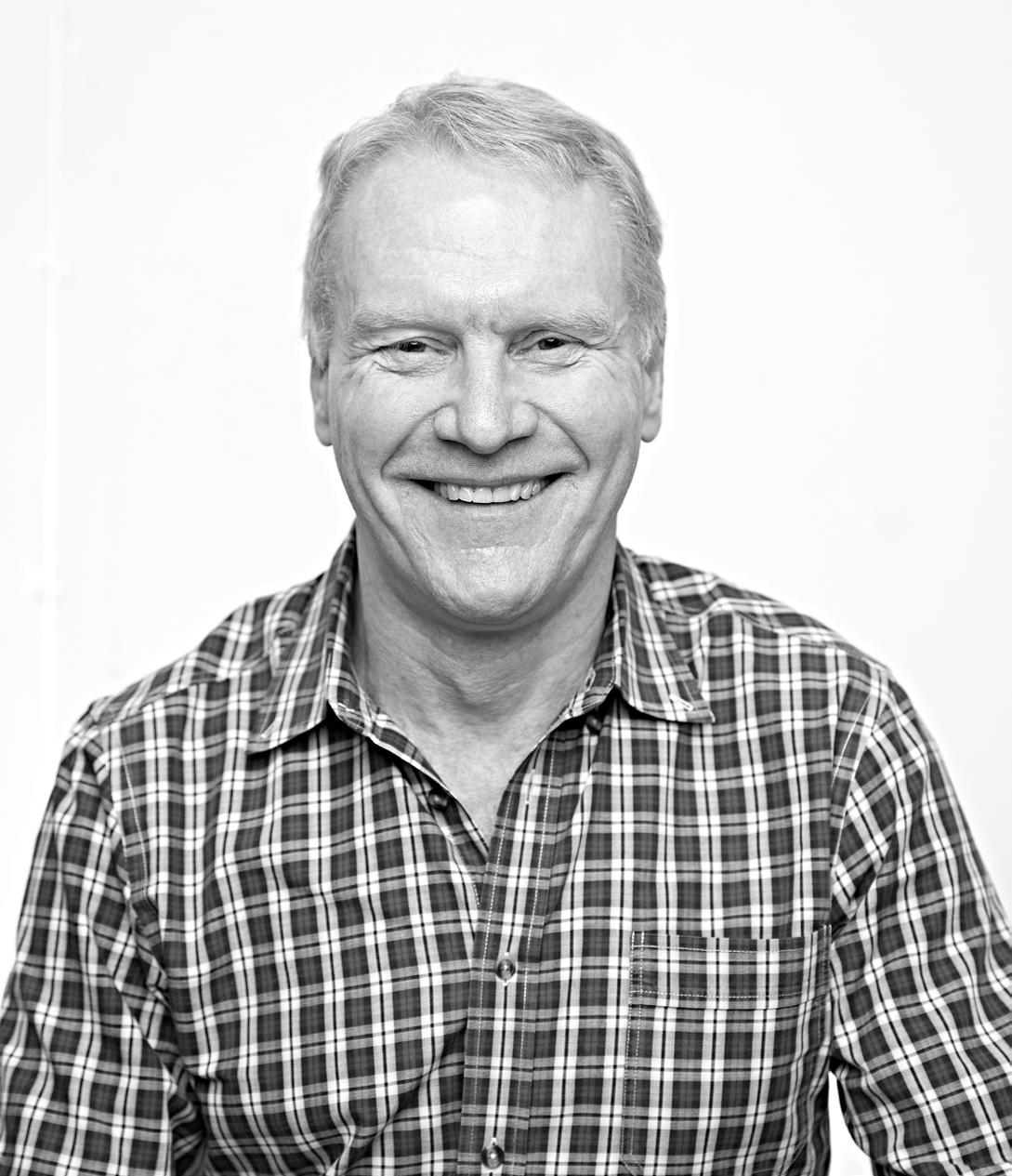
President
Thank you for taking the time to learn more about what we’re pouring our efforts toward.
I had the pleasure of knowing and working with Hans Gmoser, our founder. It gave me the chance to see firsthand just how much his passion for the environment shaped his business decisions. It influenced a lot of what he thought and did. This is something I think about often in my current role. It’s a constant motivator for me to continue that mindset forward and to create the space at CMH that allows for meaningful action to occur.
For me, that’s the key: meaningful action. If there’s one thing that I want people to know, it’s that we’re taking this seriously. We always pride ourselves on acting with integrity, and I hope people are able to see that we have the same approach when it comes to reducing our fossil fuel use, to protecting wildlife, and to being strong partners with the Indigenous and nonindigenous communities in which we operate.
I do think that actions speak louder than words. This report is a communication tool, but the real test is in what we do in the years ahead. I want our guests, our staff, our partners and our communities to feel good about our words and our actions. The really positive thing now is that our owners, Alterra Mountain Company, are on board and committed. They've set company-wide sustainability goals and have targets to reduce carbon emissions at the operations they own. We’re now in a place where we have the support to make the investments required to take bigger, more impactful strides than perhaps ever before.
If you’re a guest with us, or if you’re out adventuring on your own, I urge you to take an intentional moment when you’re out there to truly absorb where you are. To soak it all in. I think we sometimes forget to consider how fortunate we are to be in these untouched, mountain wilderness areas. It’s a true privilege — one that’s not lost on any of us.
Sincerely,

Rob
